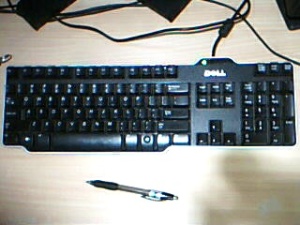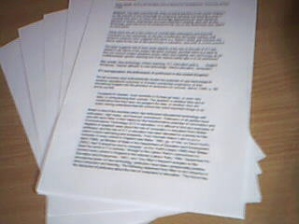Information and communication technologies, data and the transportation of that data through the latest know-how and equipment available should be of great interest to teachers and learners. My research into how ICT is used in teaching and learning focuses on two main elements. First, what type of ICT is available and what is being used. Second, how is it being used and how will it be implemented in the future, the role of the teacher.
A huge amount of ICT exists to be utilised by teachers and learners of all levels and ages. It is important to remember technology is always changing, using a tape recording or overhead projector was not long ago considered new technology. Jose Picardo (2008) describes how “technology can help motivate you and your pupils and make learning more relevant to them”. His tips for technology that would keep students attentive consist of using streaming video, music more often, teleconferencing, create your own interactive exercises, use interactive whiteboard creatively, creating pod casts, blogs or wiki, social networks, internet tools and a very creative one, make the most of your pupils gadgets. Unfortunately not a great deal of ICT provided in classrooms at the moment is being use effectively. Goldstein cited in Sutherland et al.,(2004, p.413) comments “Despite three decades of government initiatives and academic research, the use of information and communications technology (ICT) in teaching and learning remains only partially understood by educationalists and inconsistently practised in schools.”
Wheeler (2002) argues “ ICT will cause certain teaching resources to become obsolete … ICT may also make some assessment methods redundant … it is no longer sufficient for teachers merely to impart content knowledge and teachers must begin to reappraise the methods by which they meet children’s’ learning needs and match curricula to the requirements of human thought”. I don’t see this as a negative impact at all, resources will become more abundant not obsolete, assessment methods becoming redundant will clear up valuable time for teachers also students will need teacher input or at least explanations to where they went right or wrong, good teachers have never just imparted content knowledge and teachers even without using ICT should be constantly reappraising their methods. The main issue is the how or when it should be implemented. Sutherland et al.,(2004) describes the changing role of the teacher from teller to facilitator as ICT is introduced in education. This facilitator role will involve educators learning alone side students and accepting knowledge from them, as technology is always changing. The question of how or when to implement ICT in the classroom for a teacher should therefore be considered “only when it helps you achieve your lesson objective.” (Picardo, 2008).
As Haydn(2006. P. 3) explains “There is a tendency to view learning (and education) as principally a matter of transmission of information, and to underestimate the complexity of the processes involved in teaching and learning.” This tendency on either the teachers or learners behalf will create many challenges for implementation of ICT in education. ICT should then be viewed as another tool that should be utilized by teachers that empower themself with the knowledge of how and when to use it. The pedagogy of teaching will not change, educators will carefully scaffold their teachings and always implement the best strategies with or without ICT.
I have shown how ICT is used in teaching and learning is dependent on the hardware that is available and the skills and confidence of the educators implementing it. There is a huge amount of technology available to use in the classroom. ‘If’, then ‘when’, and ’how’ are the major concerns for educators implementing ICT. Teacher use ICT in education when it helps and adds to learning, have a good knowledge how to use and implement the ICT, if it is practical, if the learners are capable and when it engages the students.
REFERENCE LIST
Haydn. T, (2006).Subject Discipline Dimensions of ICT and Learning: History, a Case Study. School of Education and Professional Development, University of East Anglia. Retrieved from http://centres.exeter.ac.uk/historyresource/journal3/haydn.pdf
Picardo, J. (2008, August 07). Top ten tips for using technology in the classroom . Retrieved from http://www.youtube.com/watch?v=xiisteObuhk
Sutherland, R., Armstrong,V., Barnes, S., Brawn, R., Breeze, N., Gall, M., Matthewman, S., Olivero, F., Taylor, A., Triggs, P., Wishart, J and Johnw, P (2004). Graduate School of Education, University of Bristol, Bristol, UK Faculty of Education, University of Plymouth, Plymouth, UK. Retrieved from http://www.pgce.soton.ac.uk/ict/NewPGCE/PDFs/Transforming%20teaching%20and%20learning%20embedding%20ict%20into%20everyday%20classroom%20practices.pdf
Wheeler, S (May 20, 2000). Keynote Speech delivered to the National Czech Teachers Conference University of Western Bohemia, Czech Republic. Retrieved from http://www2.plymouth.ac.uk/distancelearning/roleteach.html


